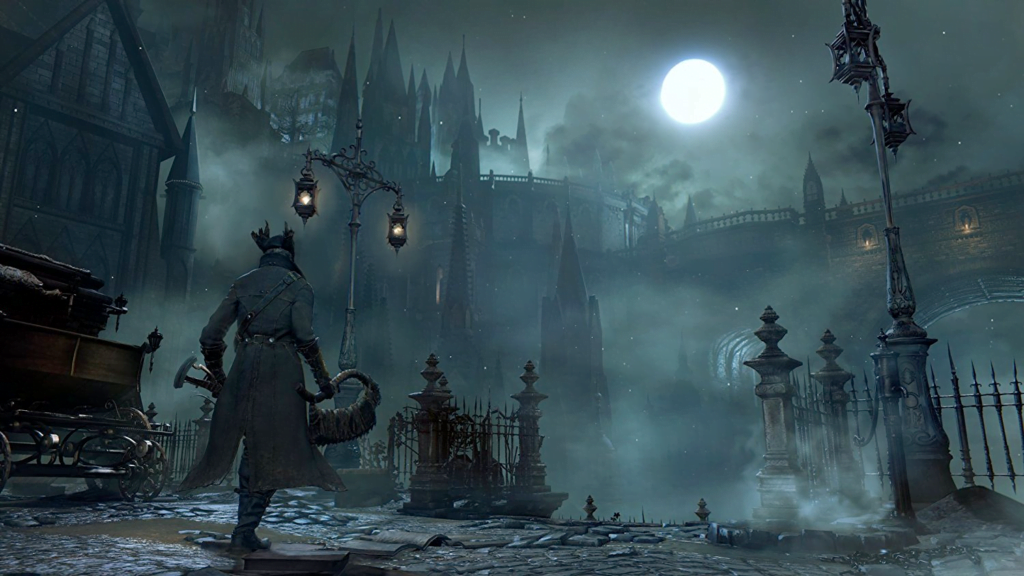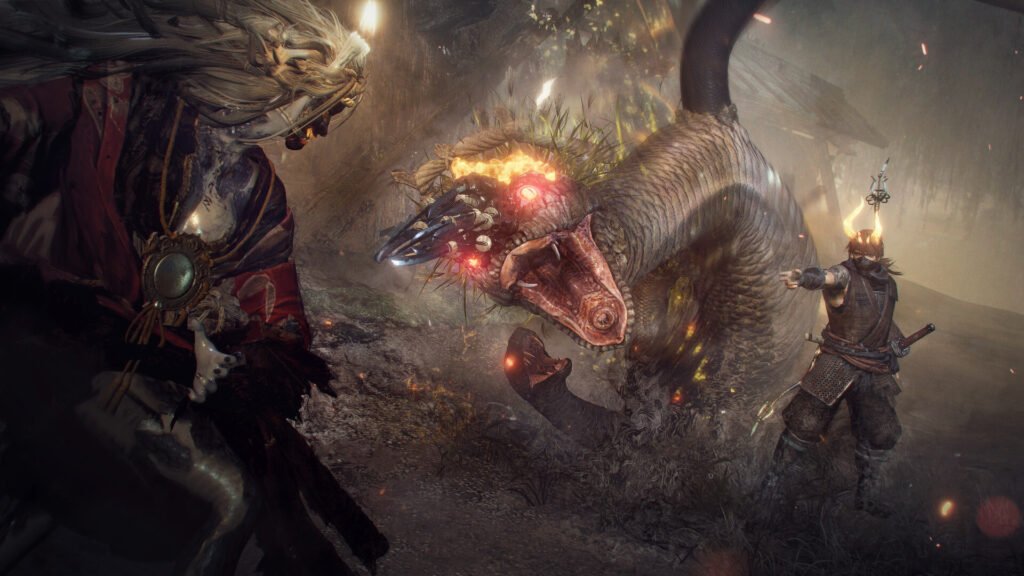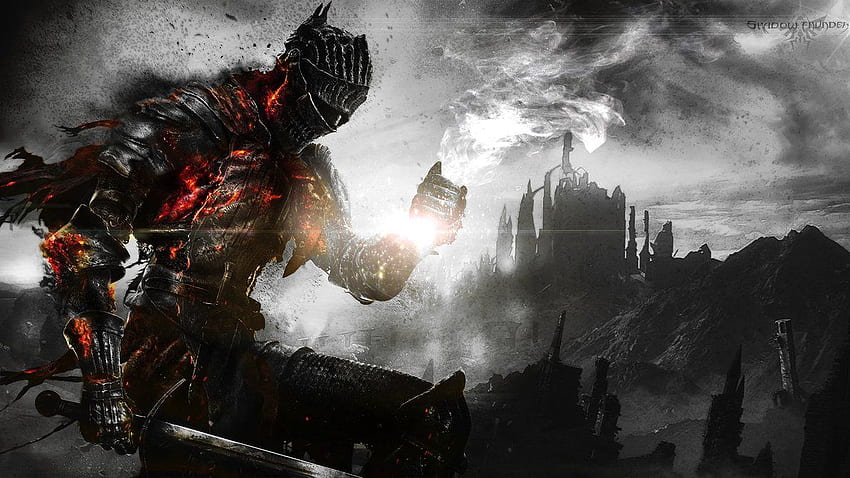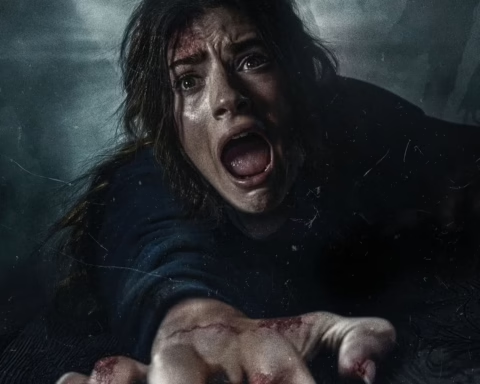The Dark Souls series, conceived by Hidetaka Miyazaki and developed by FromSoftware, is not merely a set of video games but a phenomenon that has left an indelible mark on the gaming industry. This series, which includes Dark Souls (2011), Dark Souls II (2014), and Dark Souls III (2016), stands as a testament to the power of challenging gameplay, masterful world-building, and profound storytelling.
In this in-depth review, we will explore each game in the series, delve into the mechanics that define them, examine the rich lore that underpins their worlds, and consider the broader impact and legacy of Dark Souls. Furthermore, we will look at the Souls-like genre, the games it has inspired, and how this revolutionary approach to game design has reshaped the landscape of modern gaming.
Dark Souls: The Catalyst
Dark Souls burst onto the scene in 2011, a spiritual successor to FromSoftware’s Demon’s Souls. It immediately distinguished itself with its uncompromising difficulty and unique approach to storytelling. At a time when many games were leaning towards accessibility and hand-holding, Dark Souls dared to challenge players in ways that few other games did.
Gameplay Mechanics
Dark Souls is renowned for its deliberate and methodical combat system. Every encounter, from basic enemies to towering bosses, requires careful observation, precise timing, and strategic planning. The game’s core mechanics include:
- Stamina Management: Every action, from attacking and blocking to dodging and running, consumes stamina. This mechanic forces players to think critically about their actions and manage their resources effectively.
- Bonfire System: Bonfires serve as checkpoints where players can rest, heal, and replenish their resources. Resting at a bonfire also respawns most enemies, maintaining a constant sense of danger. These bonfires are few and far between, making each one a precious oasis in the treacherous world.
- Interconnected World: The world of Dark Souls is a masterclass in level design. The interconnectedness of its world encourages exploration and rewards players with shortcuts and hidden paths that loop back to familiar areas. This design creates a sense of cohesion and immersion that few other games achieve.
- Risk-Reward Dynamics: The game’s mechanics constantly put players in situations where they must weigh risk against reward. Whether it’s deciding whether to push forward with low health and risk losing collected souls or retreating to a bonfire to regroup, these choices add a layer of strategic depth.

Lore and Storytelling
Dark Souls’ storytelling is enigmatic and subtle. Rather than delivering its narrative through cutscenes and dialogue, it relies heavily on environmental storytelling and item descriptions. This method encourages players to piece together the lore themselves, leading to a deeper engagement with the game world.
The story is set in the decaying kingdom of Lordran, a world where the line between life and death is blurred. Players take on the role of the Chosen Undead, a cursed individual tasked with linking the fire to prolong the Age of Fire, or ushering in the Age of Dark. The themes of cyclical decay and the struggle against inevitable decline are woven throughout the game, creating a rich tapestry of myth and legend.
Memorable Boss Fights
Dark Souls is renowned for its boss encounters, which are often monumental and terrifying. Each boss fight is a test of skill, patience, and perseverance. Memorable encounters include:
- Ornstein and Smough: This duo is infamous for their brutal difficulty, requiring players to manage the dynamics of fighting two powerful opponents simultaneously.
- Artorias the Abysswalker: Featured in the game’s DLC, Artorias is a tragic figure whose battle is both a narrative and mechanical highlight.
- Gwyn, Lord of Cinder: The final boss, Gwyn’s fight is both a climactic showdown and a somber reflection of the game’s themes of sacrifice and the passage of time.
Dark Souls II: A Divergent Path
Released in 2014, Dark Souls II had the daunting task of following up on the original. While it retains many of the core mechanics that defined its predecessor, it also introduces several new elements and a slightly different tone.
Gameplay Mechanics
Dark Souls II builds upon the foundations of the first game but introduces several new mechanics and changes:
- Power Stance: This new mechanic allows players to dual-wield weapons more effectively, adding variety to combat and enabling new strategies.
- Life Gems: In addition to Estus Flasks, players can use consumable items called Life Gems to heal. This provides more flexibility in how players manage their health.
- Bonfire Aesthetics: These items can be used to increase the difficulty of an area, respawning enemies and making them more challenging. This feature caters to players seeking an even greater challenge.
- Soul Memory: This controversial system tracks the total number of souls a player has collected, affecting matchmaking in multiplayer. It aims to create fairer matchups but has been criticized for limiting cooperative play.

World Design and Narrative
The world of Dark Souls II is more fragmented compared to the tightly interconnected world of the first game. The hub area, Majula, serves as a central point from which players can travel to different regions. While this design allows for a diverse range of environments, it lacks some of the cohesion that made the original world so immersive.
The narrative shifts focus to the kingdom of Drangleic, where players take on the role of the Bearer of the Curse. Themes of identity, memory, and the search for purpose are prevalent throughout the game. The lore is deepened through NPC interactions and cryptic item descriptions, continuing the series’ tradition of indirect storytelling.
Memorable Boss Fights
Dark Souls II introduces a plethora of new bosses, each with their own unique challenges. Some of the standout encounters include:
- The Pursuer: A relentless enemy who appears multiple times throughout the game, embodying the persistent nature of the curse.
- The Looking Glass Knight: A knight who can summon other players into the battle, adding an unpredictable element to the fight.
- Nashandra: The final boss, Nashandra’s fight is a culmination of the game’s themes, presenting a formidable challenge that tests the player’s mastery of the game’s mechanics.
Dark Souls III: The Grand Finale
Dark Souls III, released in 2016, serves as the concluding chapter of the series. It combines elements from both of its predecessors while introducing new mechanics and polishing the overall experience to a high sheen.
Gameplay Mechanics
Dark Souls III refines and enhances the series’ core mechanics, resulting in a game that feels both familiar and fresh:
- Faster Combat: Combat in Dark Souls III is more fluid and faster-paced compared to its predecessors. This change aligns more closely with the combat mechanics of FromSoftware’s Bloodborne, encouraging a more aggressive playstyle.
- Weapon Arts: Each weapon now has a unique skill, adding variety and depth to combat. These skills can be offensive or defensive, allowing for greater tactical flexibility.
- FP System: The introduction of Focus Points (FP) governs the use of magic and weapon arts. This system requires players to balance their use of physical and magical abilities.
- Improved Multiplayer: The multiplayer system has been streamlined, making it easier to summon friends or engage in PvP. Covenants, which dictate multiplayer interactions, are more accessible and diverse.

World Design and Narrative
The world of Dark Souls III is a dying one, with areas that feel more interconnected and intricate than in Dark Souls II. The level design harkens back to the first game, with shortcuts and hidden paths that create a sense of cohesion.
The narrative centers on the concept of the “Unkindled,” beings who are tasked with linking the fire to prevent the onset of the Age of Dark. The game explores themes of entropy, the cyclical nature of history, and the struggle against inevitable decline. It ties together numerous threads from the previous games, offering a sense of closure to long-time fans.
Memorable Boss Fights
Dark Souls III features some of the most memorable and challenging boss fights in the series:
- Pontiff Sulyvahn: A fast-paced and aggressive opponent who tests the player’s ability to manage space and timing.
- Aldrich, Devourer of Gods: A grotesque boss whose fight incorporates elements of previous games’ lore, blending narrative and gameplay seamlessly.
- The Nameless King: One of the toughest bosses in the series, his fight is a true test of skill and patience, demanding mastery of the game’s mechanics.
The Souls-like Genre: A Legacy of Challenge and Mastery
The impact of the Dark Souls series extends far beyond its own titles. It has given rise to the Souls-like genre, characterized by similar gameplay mechanics, dark and foreboding atmospheres, and intricate world-building. Let’s explore some of the most notable Souls-like games and how they have built upon the foundations laid by Dark Souls.

Bloodborne (2015)
Also developed by FromSoftware and directed by Hidetaka Miyazaki, Bloodborne is often considered a spiritual cousin to the Dark Souls series. Set in the gothic city of Yharnam, Bloodborne features faster, more aggressive combat compared to Dark Souls.
Gameplay and Mechanics
- Faster Combat: Bloodborne’s combat is designed to be more aggressive and faster-paced. The emphasis on dodging over blocking encourages players to stay on the offensive.
- Regain System: This mechanic allows players to recover lost health by quickly retaliating against enemies, rewarding aggressive play and maintaining the game’s relentless pace.
- Trick Weapons: Weapons in Bloodborne have two modes, which can be switched between during combat. This adds a layer of strategy and variety to the game’s combat mechanics.
Atmosphere and Lore
Bloodborne’s atmosphere is steeped in gothic horror, with influences from H.P. Lovecraft and Bram Stoker. The story revolves around the hunt for beasts and the uncovering of cosmic horrors. The game’s lore is rich and cryptic, inviting players to delve deep into the mysteries of Yharnam and its cursed inhabitants.
Memorable Boss Fights
- Father Gascoigne: A tragic figure whose fight serves as an early wake-up call to the game’s difficulty and depth.
- Lady Maria of the Astral Clocktower: A beautifully choreographed duel that is as much a narrative encounter as it is a test of skill.
- The Orphan of Kos: One of the most challenging and rewarding fights in the game, demanding precise timing and quick reflexes.

Nioh (2017)
Developed by Team Ninja, Nioh blends Souls-like mechanics with elements from Japanese history and mythology. Set during the Sengoku period, it tells the story of William, a Western samurai on a quest to save a spirit companion.
Gameplay and Mechanics
- Stance System: Nioh introduces a stance system, allowing players to switch between high, medium, and low stances. Each stance offers different advantages and trade-offs in combat.
- Ki Pulse: This mechanic allows players to regain stamina quickly by timing a button press after an attack, adding a rhythm element to combat.
- Guardian Spirits: Players can choose from various guardian spirits, each providing unique buffs and special abilities.
Atmosphere and Lore
Nioh’s atmosphere is steeped in Japanese folklore and history. The game features a variety of mythical creatures and historical figures, blending fantasy with reality. The story, while more straightforward than Dark Souls, offers depth through its characters and the rich lore of its setting.
Memorable Boss Fights
- Yokai Enemies: Nioh features a wide array of yokai (supernatural creatures) bosses, each requiring different strategies and approaches.
- Oda Nobunaga: The historical figure is reimagined as a powerful adversary, blending history with myth.
- The Dragon of the North: A DLC boss that tests players with its devastating attacks and intricate patterns.
Hollow Knight (2017)
Developed by Team Cherry, Hollow Knight is a Metroidvania game that incorporates Souls-like elements. Set in the hauntingly beautiful world of Hallownest, it follows the journey of a silent knight on a quest to uncover the secrets of a fallen kingdom.
Gameplay and Mechanics
- Challenging Combat: Hollow Knight features precise and challenging combat, requiring players to master timing and movement.
- Exploration and Discovery: The game’s world is vast and interconnected, with numerous secrets, hidden paths, and lore to uncover.
- Soul Mechanic: Players can collect soul from enemies to heal or use powerful abilities, adding a strategic layer to combat and resource management.
Atmosphere and Lore
Hollow Knight’s atmosphere is both melancholic and enchanting, with hand-drawn visuals and a haunting soundtrack. The game’s lore is deep and often conveyed through environmental storytelling, much like Dark Souls. The story explores themes of decay, loss, and the search for purpose.
Memorable Boss Fights
- The Radiance: The true final boss, whose fight is a culmination of the game’s narrative and mechanical challenges.
- The Mantis Lords: A memorable encounter that tests the player’s mastery of the game’s combat mechanics.
- The Hollow Knight: The titular character’s fight is both a narrative and mechanical highlight, offering a poignant conclusion to the main story.

Sekiro: Shadows Die Twice (2019)
Another FromSoftware title, Sekiro: Shadows Die Twice shifts focus from the RPG elements of Dark Souls to a more action-oriented experience. Set in a mythic version of Sengoku-era Japan, it follows the story of Wolf, a shinobi on a quest to rescue his kidnapped lord.
Gameplay and Mechanics
- Posture System: Sekiro introduces the posture system, where the goal is to break the enemy’s posture to deliver a deathblow. This mechanic emphasizes parrying and deflecting attacks.
- Stealth and Mobility: The game incorporates stealth elements, allowing players to approach encounters with more tactical options. The grappling hook adds a vertical dimension to exploration and combat.
- Resurrection Mechanic: Wolf can resurrect after death, giving players a second chance in tough battles. This mechanic adds a layer of strategy to encounters.
Atmosphere and Lore
Sekiro’s atmosphere is heavily influenced by Japanese mythology and history. The game’s world is rich with lore, and its narrative is more direct compared to Dark Souls. The story explores themes of loyalty, redemption, and the cycle of life and death.
Memorable Boss Fights
- Genichiro Ashina: A recurring adversary whose fights are some of the most intense and memorable in the game.
- Guardian Ape: A unique and challenging boss that combines elements of horror and action.
- Isshin, the Sword Saint: The final boss, whose fight is a masterclass in the game’s mechanics and a fitting end to Wolf’s journey.
The Revolution: Dark Souls’ Impact on Modern Gaming
The Dark Souls series has had a profound impact on the gaming industry, revolutionizing how games are designed, played, and perceived. Here are some of the ways Dark Souls has reshaped modern gaming:
1. Embracing Challenge
Dark Souls proved that players are willing to embrace difficulty and learn through failure. The game’s challenging nature encourages persistence and rewards mastery, creating a deeply satisfying experience. This has inspired many developers to create games that challenge players rather than hand-hold them.
2. Innovative Storytelling
Dark Souls’ approach to storytelling, relying on environmental cues, item descriptions, and cryptic dialogue, has influenced many games to adopt similar methods. This indirect storytelling technique encourages players to engage with the game world and piece together the narrative themselves, leading to a more immersive experience.
3. Interconnected World Design
The intricate and interconnected level design of Dark Souls set a new standard for world-building. This design philosophy creates a cohesive and immersive world, encouraging exploration and rewarding curiosity. Many modern games have adopted this approach, creating richly detailed and interconnected environments.

4. Unique Multiplayer Mechanics
The innovative multiplayer mechanics of Dark Souls, including summoning and invasions, have added new dimensions to cooperative and competitive play. These mechanics create a sense of community and shared experience, even in a game that is primarily single-player. The success of these systems has influenced other games to experiment with similar multiplayer elements.
5. Influence on Indie Games
The impact of Dark Souls extends to the indie gaming scene, where many developers have adopted Souls-like elements to create challenging and atmospheric games. The success of titles like Hollow Knight, Salt and Sanctuary, and Blasphemous demonstrates the widespread influence of Dark Souls on independent game development.
6. Evolution of Game Design
Dark Souls has inspired developers to rethink traditional game design principles. Its success has shown that players appreciate games that respect their intelligence, challenge their skills, and immerse them in rich, detailed worlds. This has led to a broader acceptance of complex and challenging games in the mainstream market.
Conclusion: The Enduring Legacy of Dark Souls
The Dark Souls series is more than just a collection of games; it is a cultural milestone that has fundamentally altered the landscape of the gaming industry. Its challenging gameplay, intricate world design, and deep lore have captivated millions of players and inspired a new genre of games. The series’ emphasis on embracing difficulty, innovative storytelling, and interconnected world design has left a lasting legacy that continues to influence game development to this day.
As we look back on the Dark Souls series and its impact, it is clear that FromSoftware has created something truly special. The journey through the dark and perilous worlds of Lordran, Drangleic, and Lothric is one that players will remember for years to come. The series has not only redefined what it means to create a challenging and immersive game but has also inspired a generation of developers to push the boundaries of what games can be.
In the end, the legacy of Dark Souls is one of perseverance, mastery, and the enduring appeal of a well-crafted challenge. It is a testament to the power of video games as a medium for storytelling, exploration, and personal growth. Whether you are a seasoned veteran or a newcomer to the series, the world of Dark Souls offers an unforgettable experience that continues to resonate with players around the world.









